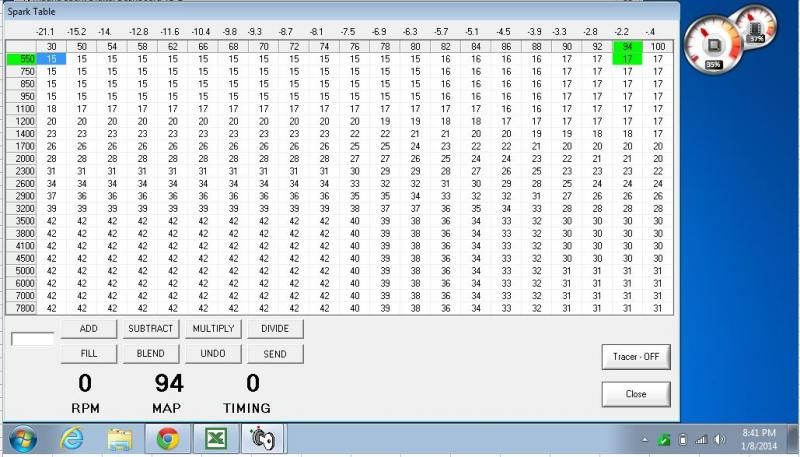Sale ends todayGet 30% off any course (excluding packages)
Ends in --- --- ---
Hello Everyone,
I have questions about using a speed density system without barometric correction and what happens when I drive to higher or lower altitudes. I have a tunable ignition system that has a 21 x 21 bin timing map(rpm vs. kpa) and for fuel I am using *cough carburetors. Where I live WOT is 94 kPa, where I grew up is higher in altitude ( 5200 ft) 83 kPa and if I go to the beach it is obviously about 101 kPa.
Is this a problem and do I need to compensate for it?
If WOT happens at lower kPa as I gain altitude that moves me closer to the high advance cruise section of the map. Is it safe to assume the engine needs more timing at WOT at altitude?
Any advice you can give me would be appreciated,
Jeremy

What you can do will depend on how you can configure the load input for the ignition table. If you're using MAP (or that's your only option) then yes, as altitude increases and air pressure decreases, you'll move down the load zones and depending how you've tuned the ignition table, this may end up with the ignition timing advancing.
A load input that's specific to the Link range of ECUs is their MGP or Manifold Gauge Pressure. This looks at the difference between MAP and Baro. Essentially with this load input at WOT you will always stay in the top load zone of your table as baro changes.
With no baro correction or if you're stuck with MAP as a load axis, you could simply copy your 0 psi/0 kPa load column across into vacuum to prevent the ignition timing advancing as baro drops.
Here's the thing though - The general trend with ignition timing is that as the mass of air and fuel being combusted reduces, we find that combustion is slower and hence we need to advance the timing to achieve MBT. This is the situation that's occurring as baro drops - we end up with less air mass in the engine so the additional advance from your lower load columns is what the engine is likely to need. Of course without testing at higher altitude/lower baro it's hard to know when those cells are optimal.
Thanks Andre for the reply. Yes, I am limited with this system to MAP as the only load option. I really appreciate you confirming that the trend of lower altitude, lower air mass, leads to a slower combustion cycle. At some point I was mixed up possibly due to not thinking this through all the way and focusing on the limitations of the system rather then synergy and what the engine wants.
I will press on and continue learning from this tuning experience. Thanks again for the clarification.
Jeremy
Be careful -- you've said that wrong. At lower altitude (the baro pressure is going UP), so the air mass is raised not lowered.
Notice that Andre said "as the baro drops - we end up with less air mass" the baro drops as the altitude goes up.
Hey David,
Yes you are correct, I made a mistake in my post. I should have said HIGHER altitude, lower air mass, leads to a slower combustion cycle.
Thanks for catching that, I should have proofread that before I posted.
Jeremy
